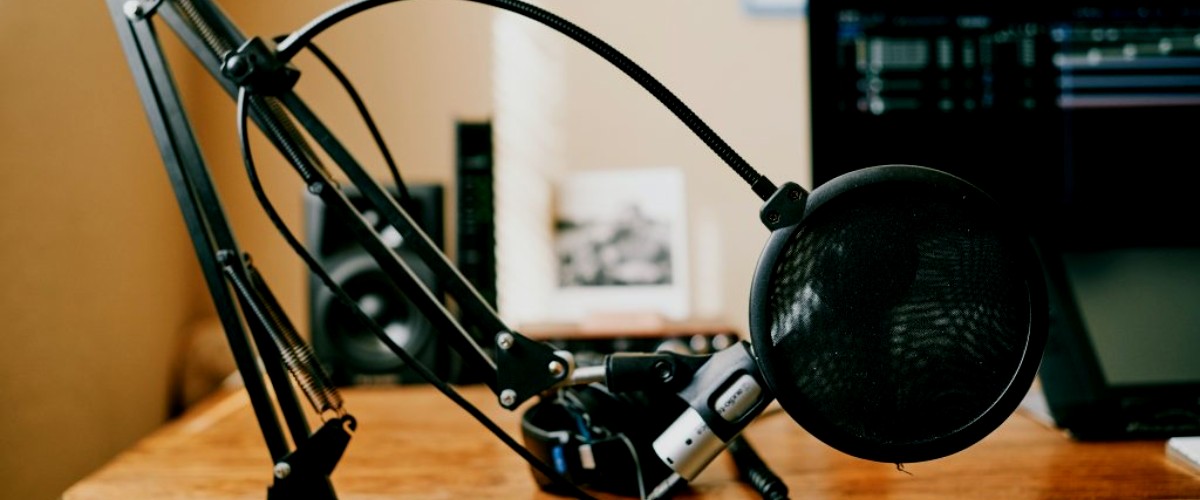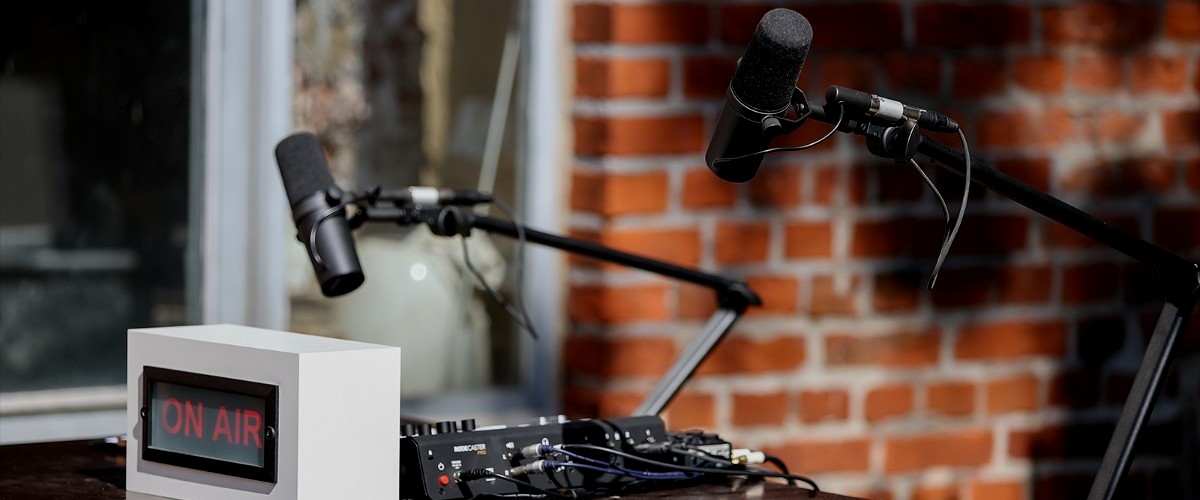Podcasting is a great way to share your voice with the world and connect with listeners. But before you can start recording, you need some essential equipment. This post will walk you through the equipment needed for podcast.
PC
You don’t need a recording studio or expensive equipment to start podcasting. All you’ll want is your computer and an audio editing program. When using a laptop, you can move around freely while you record.
Microphone
When it comes to podcasting, audio quality is key. Your listeners won’t stick around if they can’t hear you clearly, so choosing a microphone that will produce clear sound is important. There are many different microphones available, so you’ll want to research to find the best option for your needs.
Pop Filter
A pop filter is a small screen that attaches to your microphone and helps to reduce the “pop” sound that can occur when you say certain words. The primary purpose of a pop filter is to minimize or prevent sound from your P’s and T’s. It absorbs those powerful blasts of air before the sound reaches your microphone. It is vital if you’ll be recording your podcast in a quiet environment, as any background noise will be amplified.

Mic Stands
With a sturdy stand, placing the microphone and pop filter together is easy. You can also use it to position the mic properly, so you don’t have to lean forward or down. Just speak at a right angle like you used to.
Shock Mount
A shock mount is a small device that attaches to your microphone stand and holds the microphone in place. When you move or touch your microphone, it causes vibrations that are heard as short, abrupt noises in your recordings. You need a shock mount to prevent those vibrations from reaching your microphone.
Headphones
Headphones are what you use to listen to your audio while recording. You will often see podcasters and even recording artists with headphones on while they are recording. At first, it may be strange to hear your own voice, but it is the best way to monitor your audio quality and check for any overlapping noise and feedback.
Headphone Amplifier
If you’re recording with multiple people, you’ll need a headphone amplifier so everyone can hear the audio. The headphone amplifier allows you to plug in multiple pairs of headphones and adjust the volume for each person individually. This way, everyone can hear what they need to without taking their headphones off and adjusting the settings.
Mixer
A mixer is a device that allows you to control the levels of multiple audio sources at once. For example, if you’re recording a podcast with two people, you can use a mixer to control each person’s voice levels, so one isn’t too loud or soft. Mixers also come in handy when you have music playing in the background or other sound effects you want to add to your podcast.
Digital Recorder
There are times when you might need to do interviews for your podcast outside of the studio. In this case, we recommend using a portable digital recorder with a good microphone. It will help you to capture and save the audio from the interview.
Memory Storage Devices
Audio producers should store heavy audio files on external drives so their computers can better focus during import, editing, and export. For podcasting, it’s best to start with smaller portable hard drives that you bring with you or share as needed, but USB sticks are also an excellent option for those who need more space than just what’s available inside a single device.

Soundproofing Materials
If you’re recording in a shared space, you might want to consider soundproofing your area. It will reduce any background noise that your microphone might pick up. Many different types of soundproofing materials are available, so you’ll want to research to find the best option for your needs.
Podcast Recording Software
When working with podcast recording software, your content and sound quality will be much better than what’s possible through Zoom or Google Meet. The best part is that it has been designed for this specific purpose – ensuring the highest level of audio fidelity can always come out in any situation.
DAW
The next step is to specify the external hardware you will use, and don’t forget the burning software. Your choice depends on your computer’s operating system, but there are many free cross-platform programs (such as Adobe Audition) that can run on both PCs and Macs. If you need to record and edit a podcast episode quickly, some great DAWs come with everything you need for a very affordable price.
Podcast Hosting Platforms
Now that you’ve recorded your podcast, it’s time to think about where you’re going to host it. A hosting platform will provide the necessary tools to get your podcast online and syndicated to popular podcast directories. It’s important to choose a platform that offers features that fit your specific needs. There are many different podcast hosting platforms, so it’s essential to research and find the one that’s right for you. Some popular options include Podbean, Buzzsprout, and Simplecast.
Internet
Finally, you’ll need a stable internet connection to upload your podcast episodes. Make sure you have a good Upload/Download speed before recording. You should aim for a download speed of at least 12 Mbps if you share the Internet with others, especially according to the FCC.

